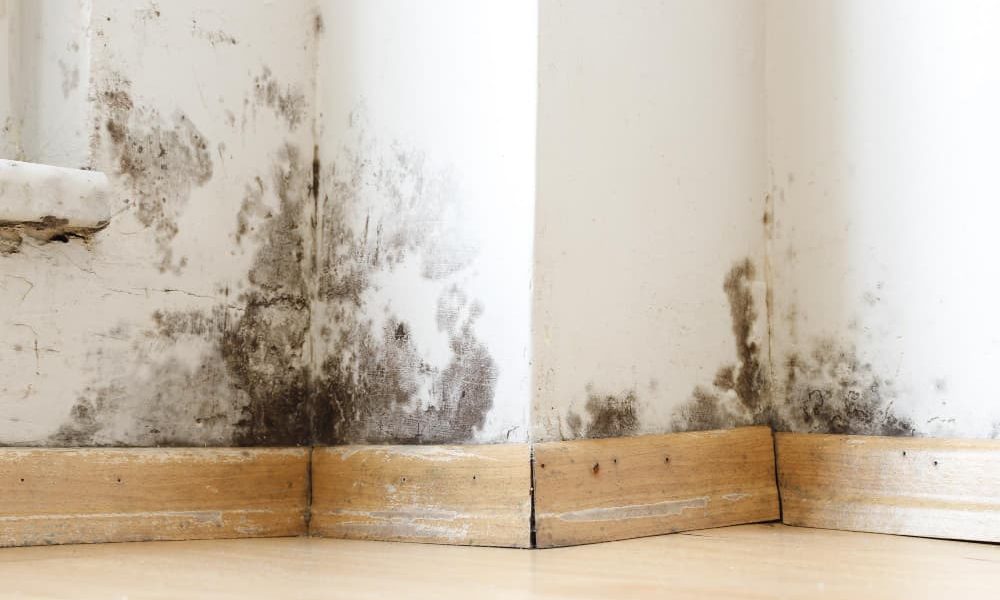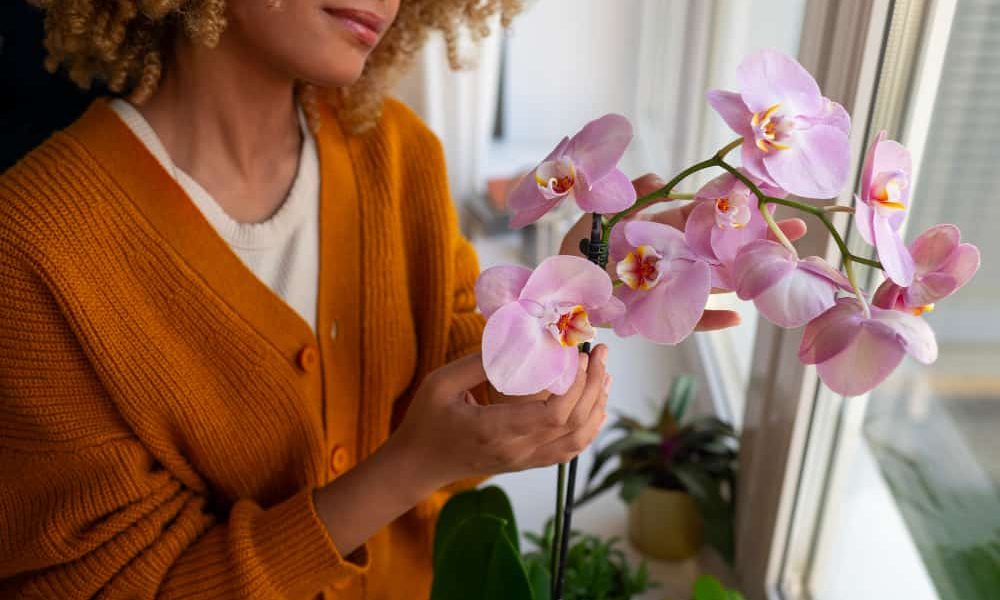In a world where sustainability and creativity go hand in hand, upcycling old items into functional, beautiful pieces has become a popular trend. Among the many DIY projects out there, transforming an old ladder into a bookshelf or plant stand is one of the most charming and versatile ways to breathe new life into something that might otherwise be discarded. Whether you’ve found a weathered wooden ladder at a flea market or uncovered an old metal one in your garage, the potential for turning it into a stylish piece of home decor is endless.
Upcycling not only reduces waste, but it also allows you to add a personal touch to your home without breaking the bank. The beauty of working with an old ladder lies in its simplicity; with just a few modifications, you can create a functional bookshelf to display your favorite books or a vibrant plant stand to showcase your greenery. Plus, the unique shape and structure of a ladder can serve as a statement piece, enhancing the aesthetic of any room or garden.
In this guide, we’ll walk you through the process of choosing the right ladder, gathering the necessary materials, and transforming it step by step into a stunning bookshelf or plant stand. Whether you’re a seasoned DIY enthusiast or a beginner looking to embark on your first upcycling project, this guide will help you create something that’s not only practical but also a reflection of your creativity and style.
1. How to Choose the Right Ladder for a DIY Bookshelf or Plant Stand
When it comes to upcycling, one of the most rewarding and creative projects is transforming an old ladder into a stylish bookshelf or plant stand. But before you dive into this fun project, the first step is choosing the right ladder. The type of ladder you pick can make or break the final product, so it’s essential to understand what works best for your needs and space. Let’s explore the different types of ladders available, what to look for in terms of condition, and how to match them to your design vision.
Types of Ladders to Consider
There’s a wide variety of ladders you can upcycle, and each has its own distinct advantages depending on the aesthetic you’re going for and the space you have in mind.
- Wooden Ladders: The Classic Look Wooden ladders are the go-to option for many DIY enthusiasts because of their natural, rustic charm. They are incredibly versatile, blending effortlessly into both vintage and modern decor. If you’re going for a farmhouse or boho style, a wooden ladder could be the perfect fit. Additionally, wood is easy to paint, stain, or distress to achieve the look you want. However, old wooden ladders can sometimes be a bit wobbly, so make sure it’s sturdy enough to support books or plants without any risk of tipping.
- Metal Ladders: Sleek and Modern Metal ladders bring a sleek, industrial feel to your space, which can be perfect for more modern or minimalistic interiors. These ladders are often stronger than their wooden counterparts, making them an excellent choice if you plan to load up your bookshelf with heavier items. A metal ladder can be polished to give it a shiny finish, or painted to create a colorful statement piece. However, ensure that the metal isn’t rusted or too damaged, as this could affect the ladder’s strength and durability.
- Step Ladders: Compact and Versatile Step ladders are often overlooked when it comes to upcycling, but they can actually be the perfect option for small spaces. With their wide steps, they naturally lend themselves to being repurposed as bookshelves. Their compact design also means they can fit into tighter spaces like bathrooms or entryways. Whether you leave them in their natural wood or give them a bold color makeover, step ladders are a great way to add charm without overwhelming a small room.
- Extension Ladders: Large and Eye-Catching If you have a larger space and want a truly unique piece, an extension ladder could be the way to go. These ladders are typically longer and taller than other types, making them perfect for creating a tall bookshelf that becomes the focal point of the room. However, because of their size, extension ladders require more effort to stabilize. You may need to cut them down to size or anchor them securely to the wall.
Assessing the Condition of an Old Ladder
Before you begin transforming your ladder, it’s crucial to assess its condition to ensure it’s suitable for upcycling. A weak or unstable ladder won’t just make for a disappointing project; it could also pose a safety hazard.
- Check for Sturdiness: Make sure the ladder doesn’t wobble or sway when standing upright. If it’s shaky, consider adding supports or reinforcing it.
- Inspect for Cracks or Splinters: Look over wooden ladders for any visible damage, such as cracks or large splinters. While some wear and tear can add to the rustic charm, structural damage will need to be repaired before you proceed.
- Look for Rust: If you’re working with a metal ladder, inspect it for rust. While some surface rust can be sanded off, deep rust spots may weaken the ladder and make it unsafe for holding heavy objects.
Choosing a ladder that’s in good condition is key to ensuring your final project is both beautiful and functional.
2. Materials and Tools You’ll Need to Turn a Ladder into a Bookshelf or Plant Stand
Once you’ve found the perfect ladder for your project, it’s time to gather the materials and tools you’ll need to bring your vision to life. Having the right supplies on hand will make the process smooth and enjoyable, so here’s a comprehensive list of everything you’ll need.
Essential Materials
- Shelving Boards: Whether you’re creating a bookshelf or a plant stand, you’ll need shelves to hold your items. The type of wood you choose for the shelving can greatly influence the look of your finished project. Pine or plywood is a good option for a budget-friendly approach, while oak or reclaimed wood can give the piece a more luxurious or rustic feel. Make sure to measure your ladder’s width and choose boards that fit snugly across the rungs.
- Brackets or Hooks (Optional): If you want extra stability for your shelves, especially on a taller ladder, consider using metal brackets to secure the shelves to the ladder. Alternatively, you can add hooks to the sides of the ladder to hang plants, baskets, or even small decor items.
- Paint or Stain: Transforming the look of your ladder is easy with a coat of paint or stain. For wooden ladders, choose a stain that enhances the natural grain of the wood for a classic look, or go bold with a brightly colored paint to make the ladder stand out. If you’re working with a metal ladder, make sure to use rust-proof paint or spray for a long-lasting finish.
- Sealant or Finish: Once your ladder is painted or stained, applying a sealant will protect it from moisture, dust, and wear. This is especially important if you’re planning to use the plant stand outdoors or in a humid environment.
Tools You’ll Need
- Saw (if cutting is required): If your ladder is too tall for the space, or if you need to cut shelving boards to the correct size, a saw will come in handy.
- Screwdriver or Drill: A screwdriver or drill is essential for securing the shelves to the ladder rungs, especially if you’re using brackets.
- Sander: For wooden ladders, a sander will help smooth out rough edges, splinters, or imperfections, giving your piece a professional finish.
- Level: Ensure your shelves are perfectly horizontal by using a level before securing them.
With the right materials and tools, you’re well on your way to turning that old ladder into a beautiful, functional piece for your home.
3. Step-by-Step Guide: Turning a Ladder into a DIY Bookshelf
Now that you’ve chosen the perfect ladder and gathered all your materials, it’s time to get started with transforming your ladder into a beautiful DIY bookshelf. This step-by-step guide will walk you through everything from preparation to finishing touches to ensure your project turns out exactly as you envision it.
Step 1: Clean and Prepare the Ladder
Before doing anything else, you’ll need to thoroughly clean your ladder. If it’s been sitting in a garage or shed for a while, there’s likely to be a layer of dirt and grime.
- Dust and Wash: Use a cloth to dust off any loose dirt, and then wash it with a gentle cleaner. For wooden ladders, avoid soaking the wood, as too much moisture could cause it to warp.
- Sand the Surface: If your ladder has splinters or rough patches, use sandpaper or a power sander to smooth them out. Sanding also helps remove old paint or finish, creating a clean surface for the new coat of paint or stain.
Step 2: Choose and Cut Shelves
The next step is to choose the shelves that will fit between the rungs of your ladder. As mentioned earlier, wood boards work great for this, but you can also get creative with glass or reclaimed materials.
- Measure and Mark: Measure the distance between the ladder rungs and cut your boards to fit. Make sure the shelves aren’t too short, as they should fit snugly across the width of the ladder.
- Test for Fit: Before attaching anything, place the shelves on the rungs to ensure they fit properly and are level.
Step 3: Paint or Stain the Ladder
Once your ladder is clean and sanded, it’s time to paint or stain it. This step is essential in transforming the look of your ladder and ensuring it complements your space.
- Prime (if necessary): For metal ladders or ladders that have been painted before, apply a primer to help the new paint adhere better.
- Apply Paint or Stain: Use a brush to apply the paint or stain in even coats. For a rustic, distressed look, you can lightly sand the paint after it dries to give the ladder a vintage feel.
- Allow to Dry: Let the paint or stain dry completely before moving on to the next step. This might take a few hours or overnight, depending on the finish you choose.
Step 4: Secure the Shelves
Now it’s time to turn your ladder into a functioning bookshelf by securing the shelves to the ladder rungs.
- Position the Shelves: Place the shelves on the rungs at your desired height.
- Secure the Shelves: Use screws or brackets to attach the shelves to the ladder. If you’re going for a more rustic, loose fit, you can skip the brackets and simply rest the shelves on the rungs.
- Check for Stability: Make sure the shelves are secure and level before loading them up with books or decor.
4. Step-by-Step Guide: Turning a Ladder into a Plant Stand
Repurposing an old ladder into a plant stand is another fantastic way to bring a creative, natural touch to your home or garden. With just a few modifications, you can turn a ladder into a stunning display for your greenery. Let’s dive into the steps.
Step 1: Clean and Prep the Ladder
Just like with the bookshelf project, the first step is to clean and prep the ladder.
- Wash and Dry: Remove any dirt, dust, or grime from the ladder’s surface. This is especially important for metal ladders, which might have accumulated rust.
- Sand Any Rough Areas: For wooden ladders, sand down any splinters or rough areas. If the ladder will be used outdoors, consider applying a weatherproofing finish to protect it from moisture.
Step 2: Choose and Secure Pots or Planters
Now that your ladder is clean and ready, it’s time to choose the pots or planters that will sit on the ladder’s steps or rungs.
- Measure for Fit: Make sure your pots or planters are appropriately sized for the ladder’s rungs or steps. For ladders with narrower rungs, consider using hanging planters or attaching smaller, lightweight pots.
- Secure the Pots (Optional): If you’re worried about pots tipping over, use small brackets or ties to secure them to the ladder. You can also drill small hooks into the ladder to hang plants from.
Step 3: Arrange Your Plants
Once your pots are secure, it’s time to start arranging your plants.
- Layer by Height: For the best visual impact, place taller plants on the lower rungs and shorter plants on the upper ones. This helps create a balanced look that draws the eye upwards.
- Use Trailing Plants: Trailing plants like ivy or pothos can add an extra dimension to your plant stand by cascading down the sides of the ladder. Consider placing these on the top shelf to allow the vines to hang naturally.
- Create Symmetry: If your ladder is placed in a corner or along a wall, symmetrical placement of plants can give a more organized appearance. But don’t be afraid to mix it up with asymmetry for a more eclectic look.
5. How to Style Your DIY Ladder Bookshelf or Plant Stand
Now that your ladder has been transformed into a functional bookshelf or plant stand, it’s time for the most exciting part: styling! Whether you’re using it to display your favorite novels, or to showcase your greenery, here are some tips to create a beautiful arrangement that will complement any room or garden.
Styling Your Ladder Bookshelf
Your ladder bookshelf isn’t just a storage unit—it’s an opportunity to showcase your personality and design aesthetic. Here’s how to make the most of it:
- Books: Arrange your books by color, size, or even genre to create an eye-catching visual. For a minimalist look, limit the number of books on each shelf and mix in decorative objects.
- Decorative Items: Combine books with small decorative items like candles, vases, or framed photos. The key is to avoid clutter—choose pieces that add to the overall aesthetic without overwhelming the shelves.
- Plants: Adding a few plants to your bookshelf can bring it to life. Consider placing small succulents or potted plants in between books for a fresh, natural look.
Styling Your Ladder Plant Stand
For your plant stand, the goal is to create a natural, cohesive display of greenery that complements your home or outdoor space.
- Grouping Plants: Group plants by type or color for a harmonious look. For example, you can create a tropical-themed plant stand with ferns and palm plants, or mix in succulents and cacti for a desert vibe.
- Vary Pot Heights: Use a combination of different pot heights to add dimension to your plant display. Taller pots can be placed on the lower rungs, while shorter pots work well on the upper shelves.
- Add Decorative Elements: Don’t limit your ladder to just plants—consider adding garden decor like small lanterns, fairy lights, or stones to enhance the overall look.
By following these steps and styling tips, you’ll have a beautiful, unique bookshelf or plant stand that’s not only functional but also a conversation starter in your home!
6. Common Mistakes to Avoid When Upcycling an Old Ladder
While turning an old ladder into a bookshelf or plant stand can be a fun and rewarding DIY project, there are several common mistakes that can impact the final result. Avoiding these pitfalls will ensure that your upcycled ladder is both safe and aesthetically pleasing.
Mistake 1: Overloading the Ladder with Weight
One of the most frequent mistakes people make when turning a ladder into a bookshelf is overloading it with too many heavy items. While ladders can support a decent amount of weight, they are not designed to hold large, dense objects like a traditional shelving unit would. To avoid this mistake:
- Limit the Weight: Keep the weight of books or decorative items on each shelf reasonable. If you’re unsure about the ladder’s capacity, distribute heavier items lower on the ladder, as this will help with stability.
- Reinforce Shelves: If you plan to store heavy items, consider reinforcing the shelves with extra brackets or supports. This is especially important for wooden ladders, which can weaken over time.
Mistake 2: Failing to Stabilize the Ladder
Ladders, by nature, are designed to lean against walls, and this can make them a bit wobbly when used as furniture. It’s essential to stabilize your ladder to ensure that it doesn’t tip over, especially if it will be used in a high-traffic area or near children and pets.
- Use Anchors: For taller ladders, especially those used as bookshelves, consider securing the ladder to the wall using anchors or brackets. This will prevent it from shifting or falling.
- Add Foot Pads: To avoid the ladder slipping on smooth surfaces, place rubber pads or grips on the bottom of the legs. This is particularly important if you plan to use the ladder on hardwood floors or tiles.
Mistake 3: Using the Wrong Paint or Finish
Choosing the wrong paint or finish can cause your project to look unprofessional or even lead to premature wear and tear. This is especially true for ladders used outdoors or in humid environments like bathrooms or kitchens.
- Pick the Right Paint: If your ladder will be placed outdoors or exposed to moisture, make sure to use weather-resistant paint or a sealant. This will protect the ladder from the elements and prevent issues like rust (on metal ladders) or mold (on wooden ones).
- Test the Finish: Before applying paint or stain to the entire ladder, test it on a small, inconspicuous area. This ensures that the finish adheres well and that you’re happy with the final look.
7. Creative Alternatives: Other Ways to Repurpose an Old Ladder
While turning an old ladder into a bookshelf or plant stand is one of the most popular upcycling projects, there are many other creative ways to repurpose ladders in your home. Here are some alternative ideas to inspire you.
Towel Rack
A ladder can be repurposed into a chic and functional towel rack for your bathroom. Simply lean a wooden or metal ladder against the wall, and drape towels over the rungs. This creates an attractive and space-saving solution for storing towels, especially in small bathrooms where storage can be limited.
Hanging Light Fixture
For a more dramatic statement, you can transform an old ladder into a unique hanging light fixture. By suspending the ladder horizontally from the ceiling and attaching pendant lights or Edison bulbs, you’ll create an eye-catching piece that adds rustic charm to kitchens, dining rooms, or outdoor patios.
Coat Rack
Old ladders can also be turned into functional coat racks. Install hooks along the rungs or sides of the ladder to hang coats, hats, and scarves. This works particularly well with smaller step ladders that can be mounted to the wall or placed near an entryway.
Garden Trellis
If you have a garden, consider turning an old wooden ladder into a trellis for climbing plants like roses, ivy, or tomatoes. Simply anchor the ladder in the soil near your plants, and they will naturally grow around it, creating a beautiful, green structure.
Conclusion: Give Your Old Ladder a New Life
Upcycling an old ladder into a bookshelf or plant stand is not only a fun DIY project but also a meaningful way to give new life to something that might otherwise be discarded. By carefully selecting the right ladder, gathering the necessary tools, and following the step-by-step instructions, you can create a beautiful, functional piece that enhances your home or garden.
Whether you’ve opted for a rustic bookshelf to display your favorite reads or a charming plant stand to show off your greenery, the possibilities are endless when it comes to repurposing ladders. And by avoiding common mistakes and exploring creative alternatives, you’ll ensure that your upcycled ladder project is both stylish and durable.
So, the next time you spot an old ladder at a yard sale or tucked away in your garage, don’t be too quick to pass it by. With a little creativity and elbow grease, that old ladder can become the highlight of your home decor.
By following this comprehensive guide, you’ll be able to successfully transform an old ladder into a stunning DIY piece that’s not only functional but also full of character. Let your creativity lead the way, and enjoy the satisfaction that comes from turning something old into something new and beautiful.







